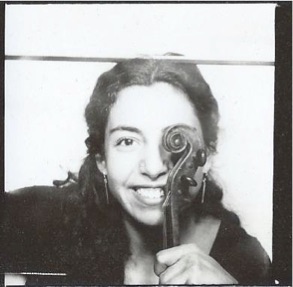Bach upside-down - Music Letter #4
Dear friends and music lovers!
I guess most of us more or less know what a canon is (the one you sing, that is…). The basic principle is to sing to play or sing the same melody with a little delay and enjoy the lovely polyphony coming out of it. What might be a little less known fact is, that this kind of polyphony is very old and can also be composed with many witty and interesting variations.
For instance, the second voice could start on a different note than the first one (transposed); or the melody could be played upside-down (mirrored the other in a horizontal axis); one voice can be twice as fast or slow as the first one - and all those examples would still be canons as long as one voice in some way perfectly imitates the other!
Johann Sebastian Bach used canons as a general principle in his famous now-so-called Goldberg Variations (or “Clavier Ubung bestehend in einer ARIA mit verschiedenen Verænderungen vors Clavicimbal mit 2 Manualen” as sounds the rather long original title). The canonic variations are composed with one additional tone interval between the voices for each variation (the first one in unison, then in a second between the voices, then one third, one fourth, a fifth, etc.). In itself an impressive achievement!
With this little explanatory introduction, I can finally get to the first important point of this music-letter: After a great success with the first livestream concert last week, we hereby announce two more live concerts for you! And the Program will be? You guessed it - Bach's wonderful Goldberg variations, this time played for string trio (mixed arrangement by Dmitri Sitkovetsky, Thomas Knörzer and yours truly). The first half will take place next week already, namely on Friday, 12th of June, at 19.00!
Here is the link to the Livestream concert on Friday:
(A big thank you for watching us last week by the way! We had about 100 people in the live audience and many more afterwards, thank you so much! If you want to hear the concert but missed it you can still watch it here.)
But even after writing these glorious variations Johann Sebastian couldn’t get enough of canons! As late as 1974, an old copy of the first printed version of the Goldberg variations was found in Strassbourg, with the last, otherwise blank page, full of scribbles in Bach's handwriting.
They turned out to be a series of highly sophisticated canons over the first eight base notes of the bass line from the ”Aria". And what fantastic canons! I have attached a picture of the page at the bottom of the email for the extra curious. And so that we can get a little in the mood for the incredible Variations, this week I recorded some of these beautiful newly discovered canons for you.
No. 10: Alio modo, per syncopationes et per ligaturas, à 2 – Evolutio. Freely translated: In old style through syncopes (rhythmic shifts) and bindings. In fact, it is a two-part canon, which Bach then turned upside down (here called ”Evolutio") and thus it can be played as a (mirror) canon for four. The bass is in the lower left corner:
Canon no. 10
No. 11: Canon duplex übers Fundament, à 5. The bass remains the same, but the other four voices belong in pairs that are mirrored over each other - when one voice goes up, the other goes down accordingly. In the video I play the bass in the left side and the four mirrored voices on the right:
Canon no. 11
Nr. 14: Canon à 4, per Augmentationem et Diminutionem. To this canon, Bach only noted the last voice and left the resolution entirely up to the musician - a musical puzzle! (German music scientist Christoph Wolff was the first to solve the puzzle and it is his resolution that I play). Translated the title reads "Canon for four voices through magnification and diminution". The bass is basically the same, but the voices that come upon it are doubled every time. Enjoy!
Canon no. 14
If you like my videos and my music letters, please send the letters on to other music lovers and hit the "like" button on YouTube or subscribe to my channel. You can subscribe or unsubscribe for the music letters by sending me an email. If you like it very much and would like to support me a little in the further production of the music letters you can also do this here. Thank you very, very much for the lovely support already!
I look forward to hearing from you and to playing for you live again very soon!
Your canonic violinist-organizer-amateur-tonmeister-camera-and-clip-lady,
Luiza Labouriau

